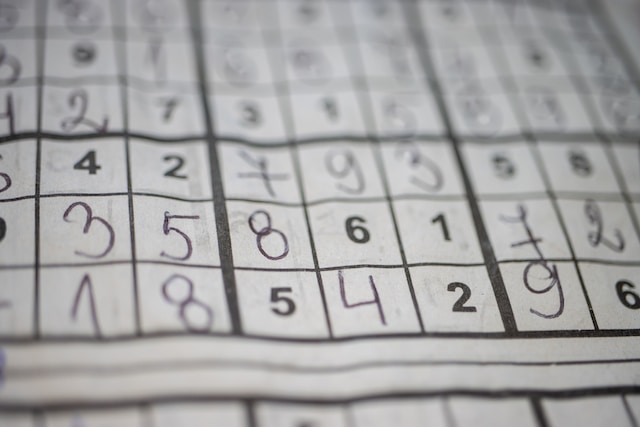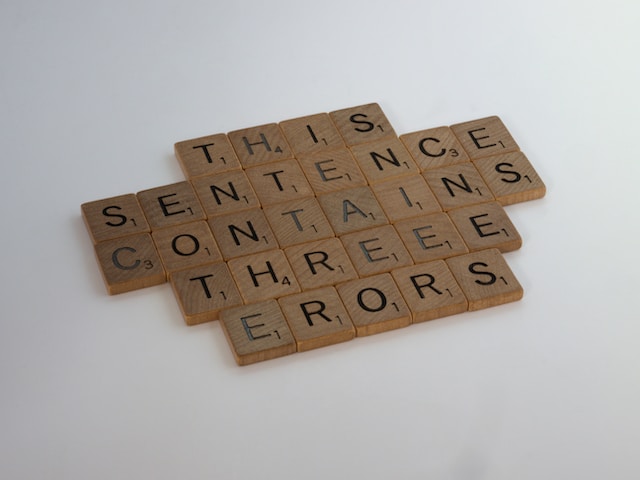Riddles tend to be more straightforward, while brain teasers are usually more complex. Riddles often have a single answer that can be easily guessed, while brain teasers usually have multiple possible answers.
Brain Teasers
(Photo by Bozhin Karaivanov on Unsplash )

Brain teasers are puzzles or riddles that require creative thinking, problem-solving skills, and mental agility to solve. They are designed to challenge and stimulate the mind, often requiring unconventional or lateral thinking to arrive at a solution.
Brain teasers can take many different forms, including word puzzles, logic puzzles, math puzzles, and visual puzzles. Some examples of brain teasers include:
- Sudoku puzzles, which require filling in a grid of numbers according to specific rules.
- Riddles, which pose a question or situation that requires careful reading and thinking to answer correctly.
- Logic puzzles, which involve a series of clues or statements that must be used to deduce a solution.
- Tangram puzzles, which require using a set of shapes to form a larger image.
Brain teasers can be used as a fun and engaging way to exercise the brain, challenge yourself, and improve your cognitive abilities. They are also commonly used in educational settings to develop critical thinking skills and problem-solving abilities in students.
Riddles
(Photo by Brett Jordan on Unsplash )

Riddles are a form of word puzzle that challenge the reader to solve a question or problem by using creative thinking and lateral reasoning. They often involve wordplay, double meanings, and cleverly disguised clues. The goal of a riddle is to figure out the correct answer or solution based on the information provided in the puzzle.
Riddles have been used as a form of entertainment and mental exercise for centuries, and they can take many different forms. Some riddles involve asking a question or presenting a situation that requires careful reading and analysis to solve, while others use visual imagery or puns to convey a hidden message. Some examples of riddles include:
- “What has a heart that doesn’t beat?” (Answer: Artichoke)
- “What is so fragile that saying its name breaks it?” (Answer: Silence)
- “I speak without a mouth and hear without ears. I have no body, but I come alive with wind. What am I?” (Answer: Echo)
Riddles can be a fun and engaging way to challenge your mind, develop critical thinking skills, and improve your ability to solve complex problems. They are also a popular form of entertainment, and can be used in social settings to spark conversation and laughter among friends and family.
Brain teasers Vs. Riddles – Key differences
Although brain teasers and riddles share some similarities, there are some key differences between the two:
Purpose: Brain teasers are designed to challenge and stimulate the mind, often requiring unconventional or lateral thinking to arrive at a solution. They are more focused on logical or analytical problem-solving. Riddles, on the other hand, are more focused on wordplay and the use of language to create a puzzle that requires careful reading and analysis to solve.
Format: Brain teasers can take many different forms, including math puzzles, logic puzzles, and visual puzzles. They may involve numbers, shapes, or patterns, and often have a specific solution that can be arrived at through logical deduction. Riddles, on the other hand, are more focused on language and wordplay, often involving puns, metaphors, and double meanings.
Difficulty: Brain teasers can range from relatively easy to extremely difficult, depending on the complexity of the problem and the skill of the person attempting to solve it. Riddles, however, are generally considered to be more challenging, as they require careful reading and analysis to understand the meaning behind the words.
Use: Brain teasers are often used in educational settings to develop critical thinking and problem-solving skills in students, while riddles are more commonly used as a form of entertainment and social interaction.
Brain teasers and riddles are both forms of puzzles that require mental agility and creative thinking to solve, but they differ in their focus, format, difficulty, and use.
Examples of Brain Teasers and Riddles
Brain teasers are designed to test your problem-solving and logic skills, while riddles are designed to test your knowledge and understanding. Here are some examples of each:
Brain Teaser:
- A doctor and a bus driver are both in love with the same woman, an attractive girl named Sarah. The bus driver had to go on a long bus trip that would last a week. Before he left, he gave Sarah seven apples. Why? – An apple a day keeps the doctor away!
- A woman shoots her husband. Then she holds him under water for over 5 minutes. Finally, she hangs him. But 5 minutes later they both go out together and enjoy a wonderful dinner together. How can this be? – The woman was a photographer. She shot a picture of her husband, developed it, and hung it up to dry.
Riddles:
- I have a tail, and I have a head, but I have no body. I am NOT a snake. What am I? – A coin
- What has a heart that doesn’t beat? – An artichoke!
Do riddles and brain teasers increase IQ?
As you can see a brain teaser often involves an incident or story and hides the answer within the question. it usually is long and interesting. whereas a riddle is very straightforward.
While there is no conclusive scientific evidence to suggest that riddles and brain teasers can directly increase IQ, they can certainly help to develop and enhance certain cognitive skills that are associated with higher intelligence, such as critical thinking, problem-solving, and creativity.
Engaging in activities that stimulate the mind, such as solving puzzles and riddles, can help to exercise the brain and improve cognitive function. Some studies have even suggested that regularly engaging in mentally stimulating activities can lead to improved cognitive performance and a reduced risk of cognitive decline later in life.
However, it is important to note that intelligence is a complex and multi-dimensional construct that is influenced by a wide range of factors, including genetics, environment, and life experiences. While solving riddles and brain teasers can be a fun and engaging way to challenge your mind and develop certain cognitive skills, it is not a guaranteed way to increase your overall intelligence or IQ.
Fatured Image by Jonathan Kemper on Unsplash








